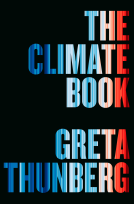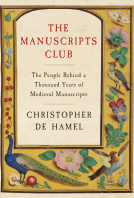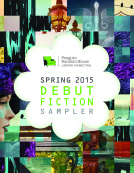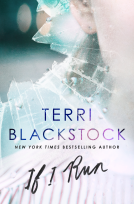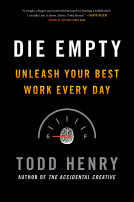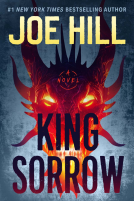Please wait... This may take a moment.
The Phantom of the Opera
by Philip J. Riley
This title was previously available on NetGalley and is now archived.
Pub Date
Jun 05 2015
| Archive Date
Sep 18 2015
Description
The
silent movie version of The Phantom of the Opera that we are familiar
today is not the original 1925 release but a silent version of the 1929
sound remake.
Directed by Rupert Julian and
starring Lon Chaney, Sr. in the title role as a deformed musician
haunting the Paris Opera House, committing murder, and terrorizing the
owners and producers in a pathetic and terrible attempt to earn the love
of a famous opera singer.
Stars included Mary
Philbin, Norman Kerry, Arthur Edmund Carewe, Gibson Gowland, John St.
Polis, and Snitz Edwards. The last surviving cast member was Carla
Laemmle, who was the niece of Universal Studios’ producer Carl Laemmle.
In
this new illustrated book, follow the history of the 1925 original
release from Gaston Leroux's original conception to the 1929 sound
remake. What actual events inspired the story? What inspired Chaney's
makeup? What was in the hour of footage cut from the film’s release that
was considered too horrible for audiences in 1925?
Contributions
by Mary Philbin (Christine), Ray Bradbury, Ron Chaney, Carl Laemmle
Junior, Charles Van Enger (cinematographer), Rupert Julian, Virgil
Miller (cinematographer), Ben Carré (Art Director), and Patric Leroux.
The
silent movie version of The Phantom of the Opera that we are familiar
today is not the original 1925 release but a silent version of the 1929
sound remake.
Directed by Rupert Julian and...
Description
The
silent movie version of The Phantom of the Opera that we are familiar
today is not the original 1925 release but a silent version of the 1929
sound remake.
Directed by Rupert Julian and
starring Lon Chaney, Sr. in the title role as a deformed musician
haunting the Paris Opera House, committing murder, and terrorizing the
owners and producers in a pathetic and terrible attempt to earn the love
of a famous opera singer.
Stars included Mary
Philbin, Norman Kerry, Arthur Edmund Carewe, Gibson Gowland, John St.
Polis, and Snitz Edwards. The last surviving cast member was Carla
Laemmle, who was the niece of Universal Studios’ producer Carl Laemmle.
In
this new illustrated book, follow the history of the 1925 original
release from Gaston Leroux's original conception to the 1929 sound
remake. What actual events inspired the story? What inspired Chaney's
makeup? What was in the hour of footage cut from the film’s release that
was considered too horrible for audiences in 1925?
Contributions
by Mary Philbin (Christine), Ray Bradbury, Ron Chaney, Carl Laemmle
Junior, Charles Van Enger (cinematographer), Rupert Julian, Virgil
Miller (cinematographer), Ben Carré (Art Director), and Patric Leroux.
A Note From the Publisher
Netgalley and/or Kindle doesn't allow Kindle versions for Big pdfs like this, which has a lot of pictures. So, my apologies if you want to read it that way.
Netgalley and/or Kindle doesn't allow Kindle versions for Big pdfs like this, which has a lot of pictures. So, my apologies if you want to read it that way.
Advance Praise
"Each
page is filled with documented information that will change a few
history books. You almost get the feeling that you are part of the
Golden' years of Hollywood." –Ray Bradbury
"It looks
as if this volume of The Phantom of the Opera will be the only record
for the rest of time if the original release of 1925." –Ron Chaney
"Each
page is filled with documented information that will change a few
history books. You almost get the feeling that you are part of the
Golden' years of Hollywood." –Ray Bradbury
"It looks...
Advance Praise
"Each
page is filled with documented information that will change a few
history books. You almost get the feeling that you are part of the
Golden' years of Hollywood." –Ray Bradbury
"It looks
as if this volume of The Phantom of the Opera will be the only record
for the rest of time if the original release of 1925." –Ron Chaney
Available Editions
| EDITION |
Paperback |
| ISBN |
9781593938178 |
| PRICE |
$24.95 (USD)
|
Additional Information
Available Editions
| EDITION |
Paperback |
| ISBN |
9781593938178 |
| PRICE |
$24.95 (USD)
|
Average rating from 16 members
Featured Reviews
 Diana B, Media/Journalist
Diana B, Media/Journalist
4 stars
4 stars
4 stars
4 stars
4 stars
Gorgeous book full of photos and information. Essentially everything you ever wanted to know about Phantom of the Opera throughout history. Lovely theater art, news clippings and excerpts from scripts. Disappointing that this could not be downloaded to a Kindle and that the computer version had pages that were loaded in different directions which made reading even more difficult. If not for formatting issues this would have received 5 stars.
4 stars
4 stars
4 stars
4 stars
4 stars
 Librarian 105878
Librarian 105878
5 stars
5 stars
5 stars
5 stars
5 stars
This "Making of" book about "The Phantom of the Opera" is a tremendous resource and clearly a work of love by author Philip J. Riley.
The term 'classic' is much over-used today, which possibly takes away from the importance of the meaning. To say that the 1925 film, The Phantom of the Opera, is a classic is an understatement, even its truest meaning. It is, quite possibly, the classic film defining the early form of the film medium and the wizardry initiative that film began.
In this book, Riley has dug deep to unearth some great information and interviews with those who have a connection to the film. What is unknown to most people is that there is almost as much a mystery surrounding the original film as there is in the story. What most people think of as the original 1925 silent film, starring Lon Chaney, is actually a modified, re-edited version. Riley takes us through all the variations of the film, what is known about the different versions, and what is unknown. I found it fascinating that in this silent film era, some (though not all) of this film was filmed in Technicolor alongside the standard black and white.
This information and research alone is valuable to anyone interested in the film and the changing era of silent to talkies and black and white to Technicolor. But this book offers so much more.
I've been a fan of films and film-making and done a fair amount of research of screenwriting but I've never had the opportunity to read a script as it was written for the silent film era. I personally may have been most excited to read through the original silent film script for Phantom of the Opera than any other aspect of this book.
There are a lot of stills included here, as well as press releases and reviews and articles by other magazines. The book ends with a very long article (or series of articles) from Liberty magazine, detailing Chaney's career. Much of this extra, included material is in the form of reproduction straight from the original source (in the case of newspaper or magazine articles often including period ads). While it is so nice to see these things exactly as they appeared originally, it was sometimes very hard to read these, especially in the digital format that I was using.
I truly can't believe how much valuable information was included in this volume and I think that this should be a required textbook for anyone interested in film.
Looking for a good book? Philip J. Riley's The Phantom of the Opera is a well-researched examination of one of the most critical films in Hollywood's history.
I received a digital copy of this book from the publisher, through Netgalley, in exchange for an honest review.
5 stars
5 stars
5 stars
5 stars
5 stars
Featured Reviews
 Diana B, Media/Journalist
Diana B, Media/Journalist
4 stars
4 stars
4 stars
4 stars
4 stars
Gorgeous book full of photos and information. Essentially everything you ever wanted to know about Phantom of the Opera throughout history. Lovely theater art, news clippings and excerpts from scripts. Disappointing that this could not be downloaded to a Kindle and that the computer version had pages that were loaded in different directions which made reading even more difficult. If not for formatting issues this would have received 5 stars.
4 stars
4 stars
4 stars
4 stars
4 stars
 Librarian 105878
Librarian 105878
5 stars
5 stars
5 stars
5 stars
5 stars
This "Making of" book about "The Phantom of the Opera" is a tremendous resource and clearly a work of love by author Philip J. Riley.
The term 'classic' is much over-used today, which possibly takes away from the importance of the meaning. To say that the 1925 film, The Phantom of the Opera, is a classic is an understatement, even its truest meaning. It is, quite possibly, the classic film defining the early form of the film medium and the wizardry initiative that film began.
In this book, Riley has dug deep to unearth some great information and interviews with those who have a connection to the film. What is unknown to most people is that there is almost as much a mystery surrounding the original film as there is in the story. What most people think of as the original 1925 silent film, starring Lon Chaney, is actually a modified, re-edited version. Riley takes us through all the variations of the film, what is known about the different versions, and what is unknown. I found it fascinating that in this silent film era, some (though not all) of this film was filmed in Technicolor alongside the standard black and white.
This information and research alone is valuable to anyone interested in the film and the changing era of silent to talkies and black and white to Technicolor. But this book offers so much more.
I've been a fan of films and film-making and done a fair amount of research of screenwriting but I've never had the opportunity to read a script as it was written for the silent film era. I personally may have been most excited to read through the original silent film script for Phantom of the Opera than any other aspect of this book.
There are a lot of stills included here, as well as press releases and reviews and articles by other magazines. The book ends with a very long article (or series of articles) from Liberty magazine, detailing Chaney's career. Much of this extra, included material is in the form of reproduction straight from the original source (in the case of newspaper or magazine articles often including period ads). While it is so nice to see these things exactly as they appeared originally, it was sometimes very hard to read these, especially in the digital format that I was using.
I truly can't believe how much valuable information was included in this volume and I think that this should be a required textbook for anyone interested in film.
Looking for a good book? Philip J. Riley's The Phantom of the Opera is a well-researched examination of one of the most critical films in Hollywood's history.
I received a digital copy of this book from the publisher, through Netgalley, in exchange for an honest review.
5 stars
5 stars
5 stars
5 stars
5 stars
Readers who liked this book also liked:
The Climate Book
Greta Thunberg
Biographies & Memoirs, Outdoors & Nature, Science
Sloppy
Rax King
Biographies & Memoirs, Essays & Collections
If I Run
Terri Blackstock
General Fiction (Adult), Mystery & Thrillers
Die Empty
Todd Henry
Business, Leadership, Finance
King Sorrow
Joe Hill
General Fiction (Adult), Horror, Mystery & Thrillers

 Diana B, Media/Journalist
Diana B, Media/Journalist
 Librarian 105878
Librarian 105878
